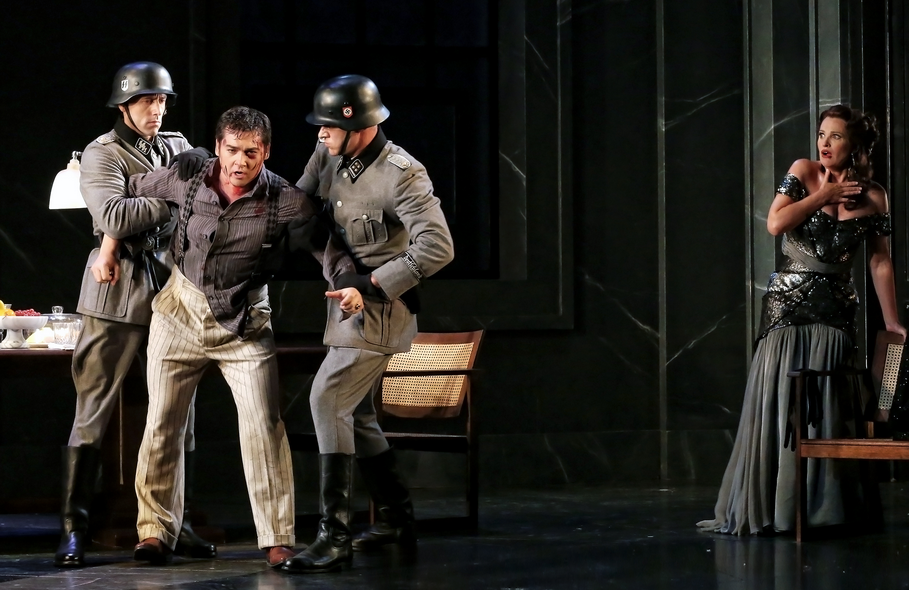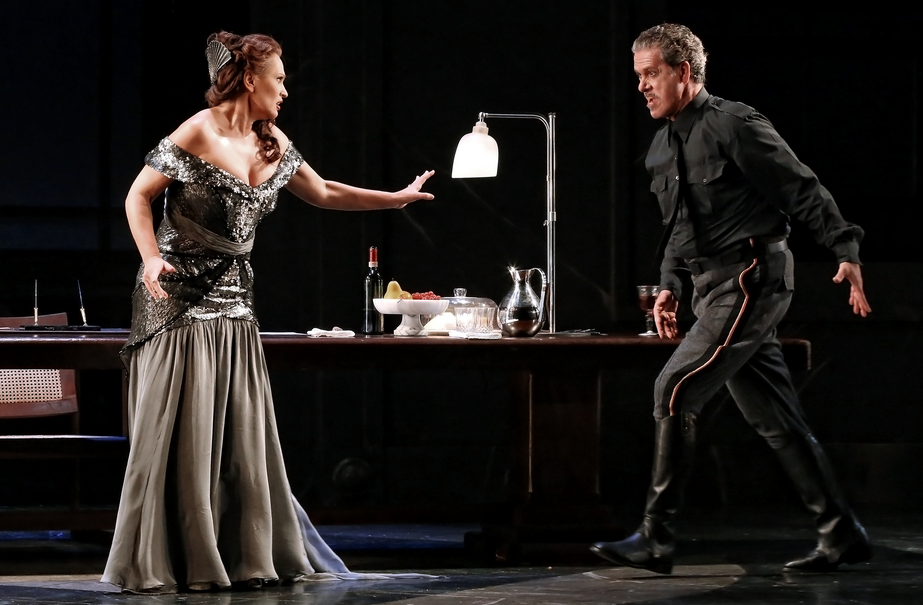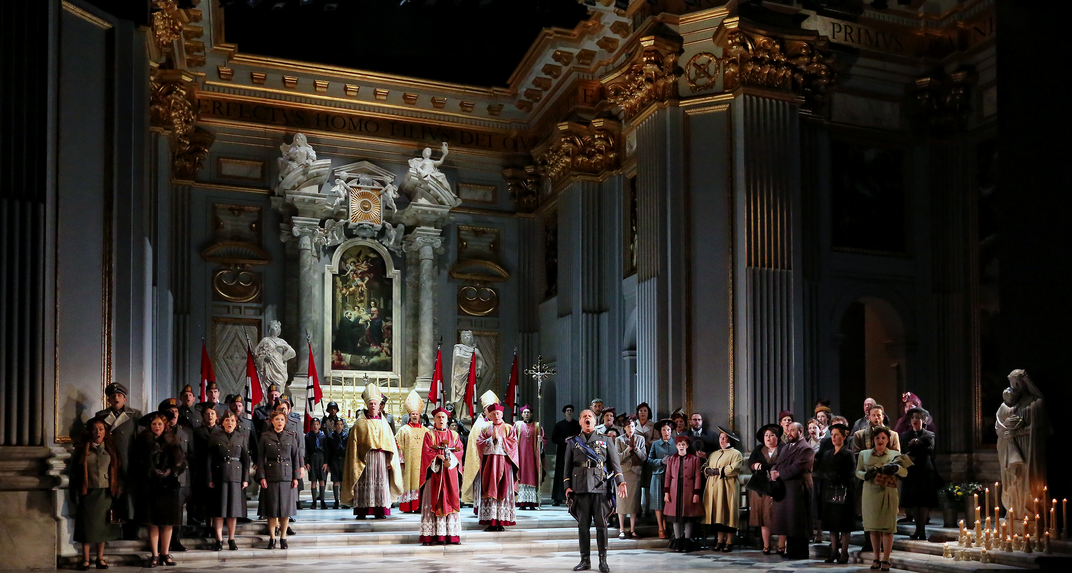Nazi-themed opera productions are something of a cliché, but Australian actor and director John Bell’s production of Tosca for Opera Australia, first staged in 2013, is proof that it can be done thoughtfully and powerfully.
 Teodor Ilincăi as Cavaradossi, Ainhoa Arteta as Tosca
Teodor Ilincăi as Cavaradossi, Ainhoa Arteta as Tosca
Bell cleverly shifts the action from 1800 to German-occupied Rome in 1943, the curtain opening on Michael Scott-Mitchell’s cavernous chapel set, columns and white marble from floor to ceiling, the walls decked with artworks and gilding. The tryptich of sets themselves tell the story of Nazi occupation, from Chapel, through the black marble Nazi boardroom in the Farnese Palace, to the concrete and barbed wire of Castel Sant’Angelo, while Teresa Negroponte’s costumes complete the picture with military uniforms and muted 40s fashion across various socio-economic groups.
Romanian tenor Teodor Ilincăi is uncomplicated and noble – almost baby-faced – as the painter Cavaradossi, with an athletic, penetrating tenor capable of ear-ringing volume. Spanish soprano Ainhoa Arteta, on the other hand, is a complex Tosca. Flirty and playfully jealous – tugging on Ilincăi’s scarf – in the first act, she exudes dignified composure in the second, her molten soprano pouring out into the theatre. While her Vissi d’arte drips pathos, it is her duets with Cavaradossi in the first and third acts that really stand out, the pair well-matched and feeding off each other for power and potency.
 Ainhoa Arteta as Tosca and Lucio Gallo as Scarpia
Ainhoa Arteta as Tosca and Lucio Gallo as Scarpia
Richard Anderson is a highlight as the escaped prisoner Angelotti, his smouldering bass infused with a resonant depth and emotion, while baritone Luke Gabbedy makes for a comically awkward, gangly yet clear-voiced Sacristan and Graeme Macfarlane is a cold, dryly smug Spoletta. Adrian Tamburini as Sciarrone and Anthony Mackey as the jailer round out the Nazi staff.
Italian baritone Lucio Gallo is a calmly frightening Scarpia, playing the role with an almost laid-back arrogance, assured of his own authority. If his voice sounded slightly muted in his first scene, it soon grew to a forceful intensity. His lechery is violent but also detached, exuding a kind of cruel apathy as he torments a female staff member during his act two Ha più forte sapore – essentially an ode to rape.
Adrian Escudero-Genc deserves a mention as the Shepherd Boy – a Jewish child destined for the death-camps in Bell’s dark reimagining – the bright innocence of his Io de’ sospiri is overlaid with melancholic dramatic irony.
 Lucio Gallo, Opera Australia’s Children’s Chorus and the Opera Australia Chorus
Lucio Gallo, Opera Australia’s Children’s Chorus and the Opera Australia Chorus
The OA chorus is in top form and the Te Deum at the end of the first act, Nazi soldiers sweeping into the church with swastikas on display for the first time is captivating, bringing to a head the atmosphere of menace that has been growing since the beginning of the opera. It is at this point that Scarpia’s obsessive lust takes on a hint of madness. From the brassy opening to the abrupt cut-off of the finale Christian Badea leads the Opera Australia Orchestra with bristling energy and verve.
Bell’s direction is superb – a deftly managed crescendo of tension that builds from first act to last. And if the drama slackens slightly at times in the third act, it is pulled taught by Ilincăi’s stunning rendition of E lucevan le stele, underpinned by a magical clarinet solo from Peter Jenkin. This production has more than earned its place in Opera Australia’s repertoire.
Opera Australia’s Tosca is at the Sydney Opera House until March 31











Comments
Log in to join the conversation.